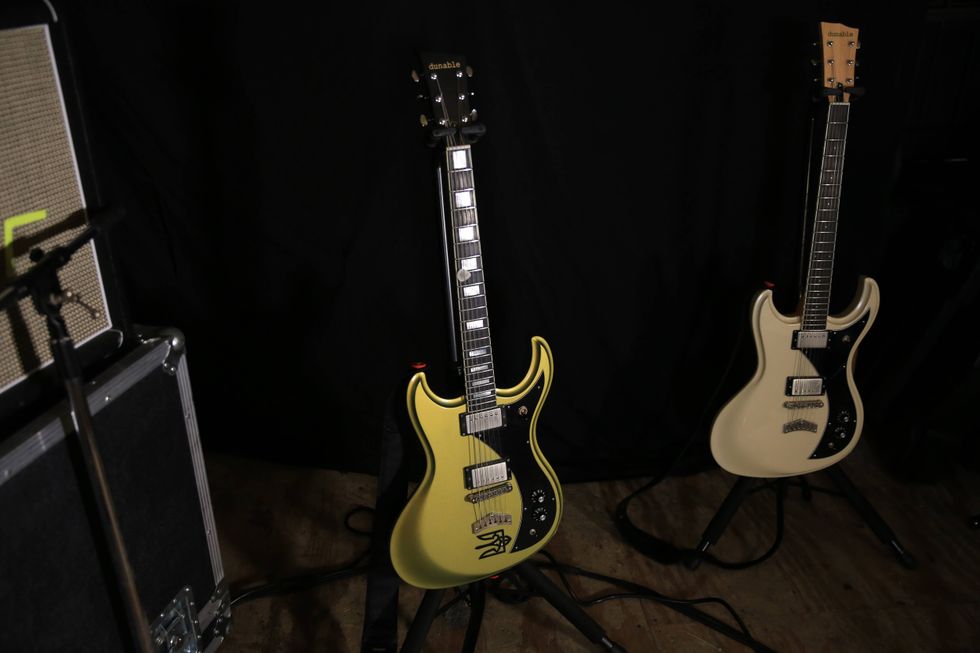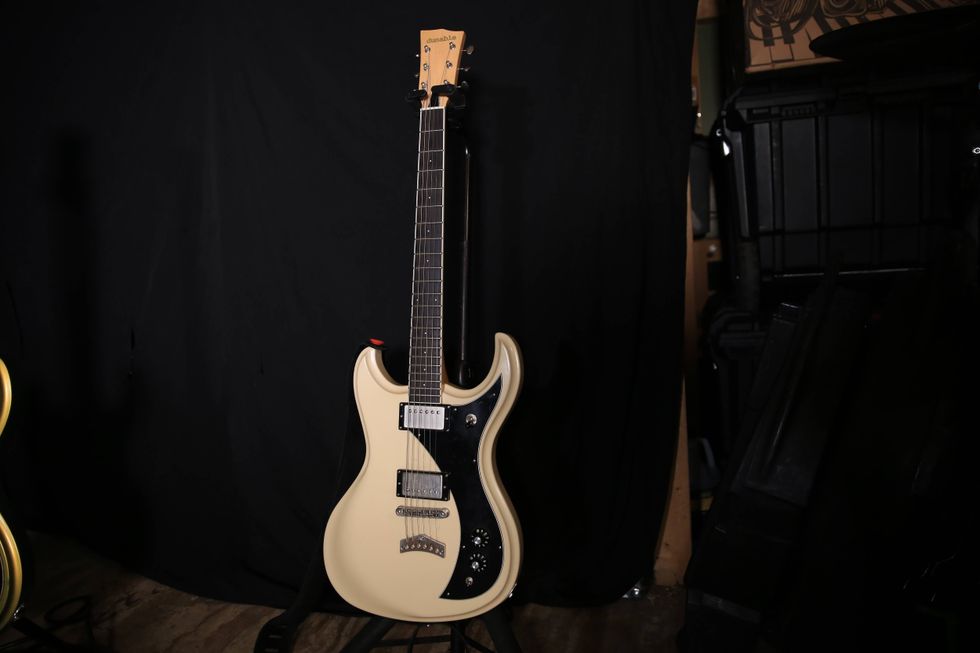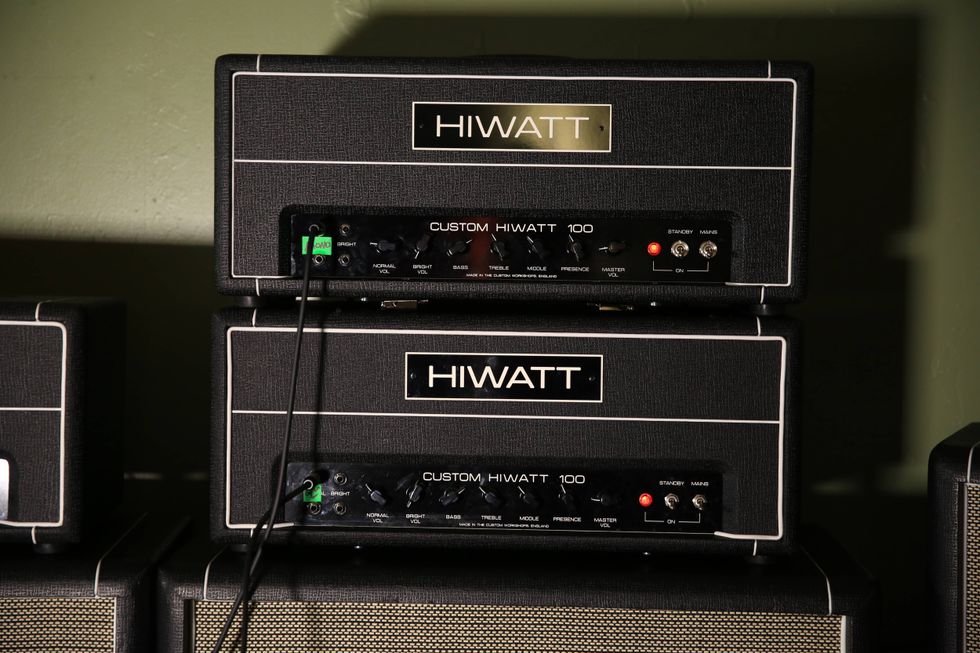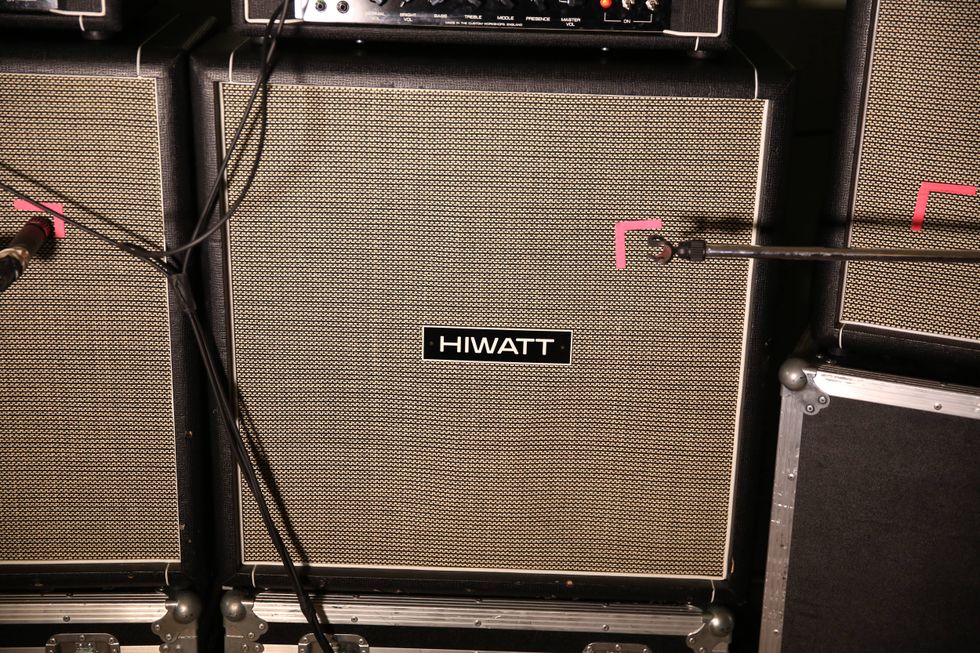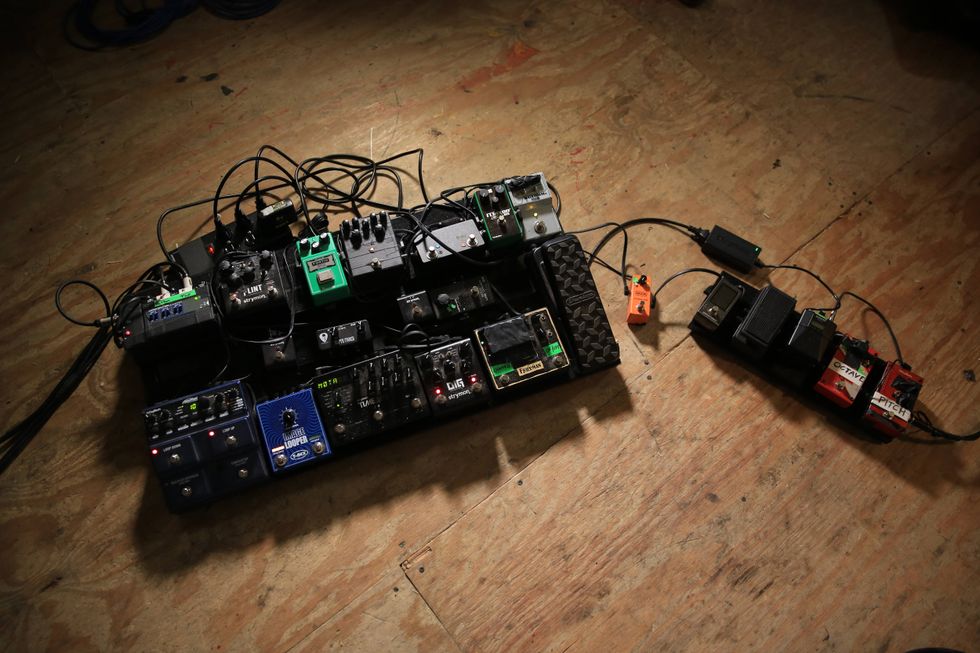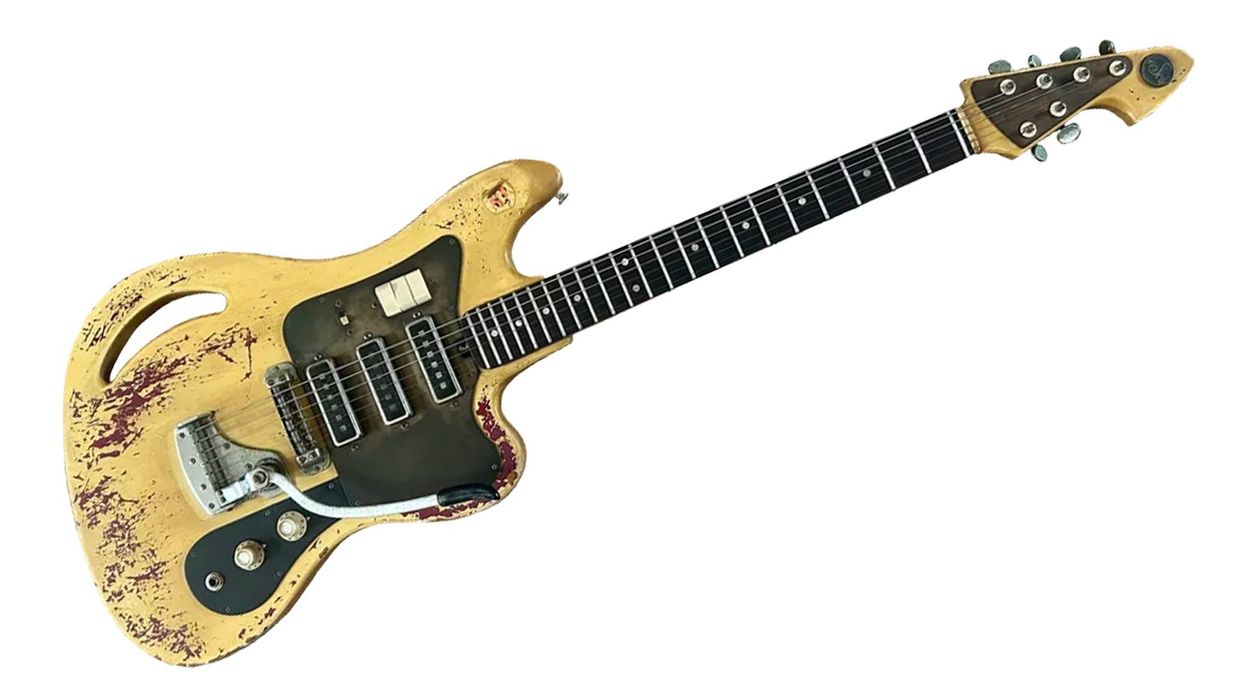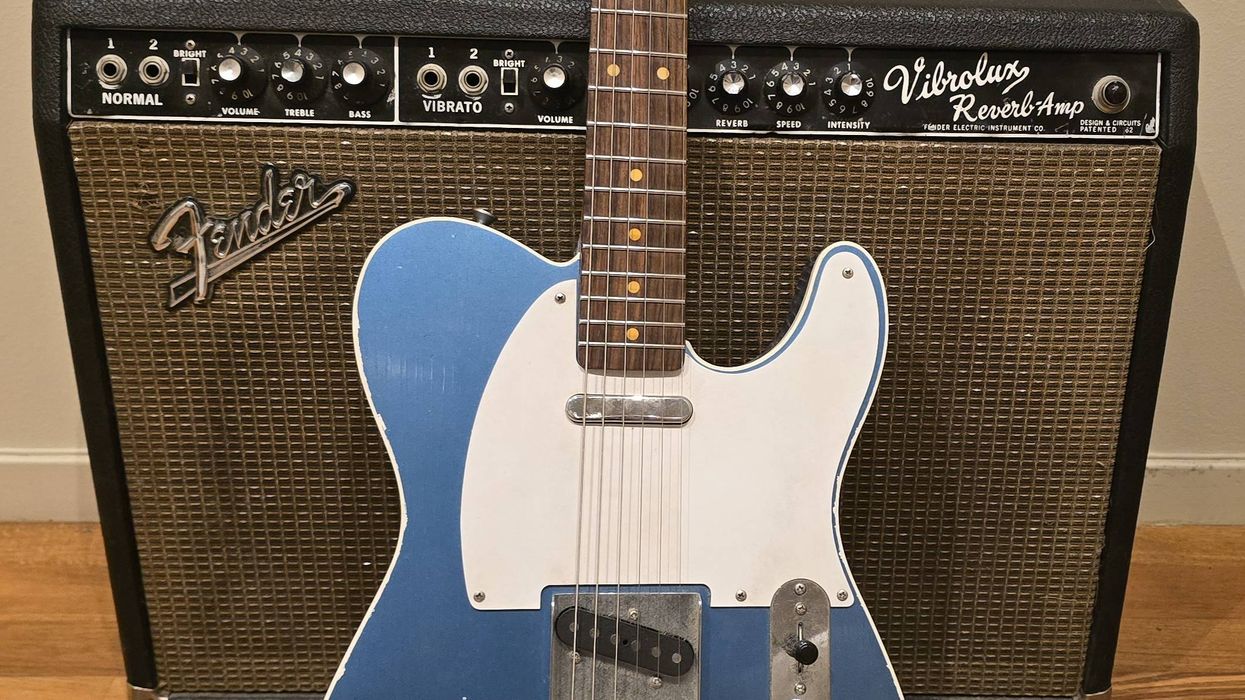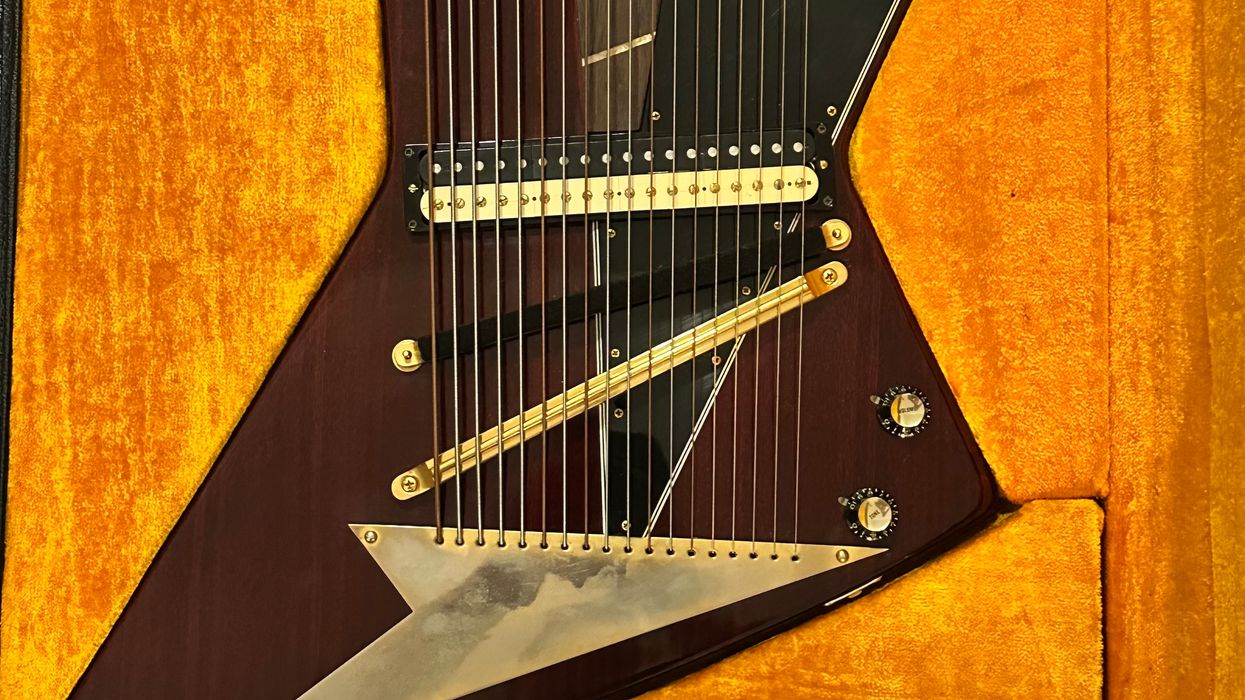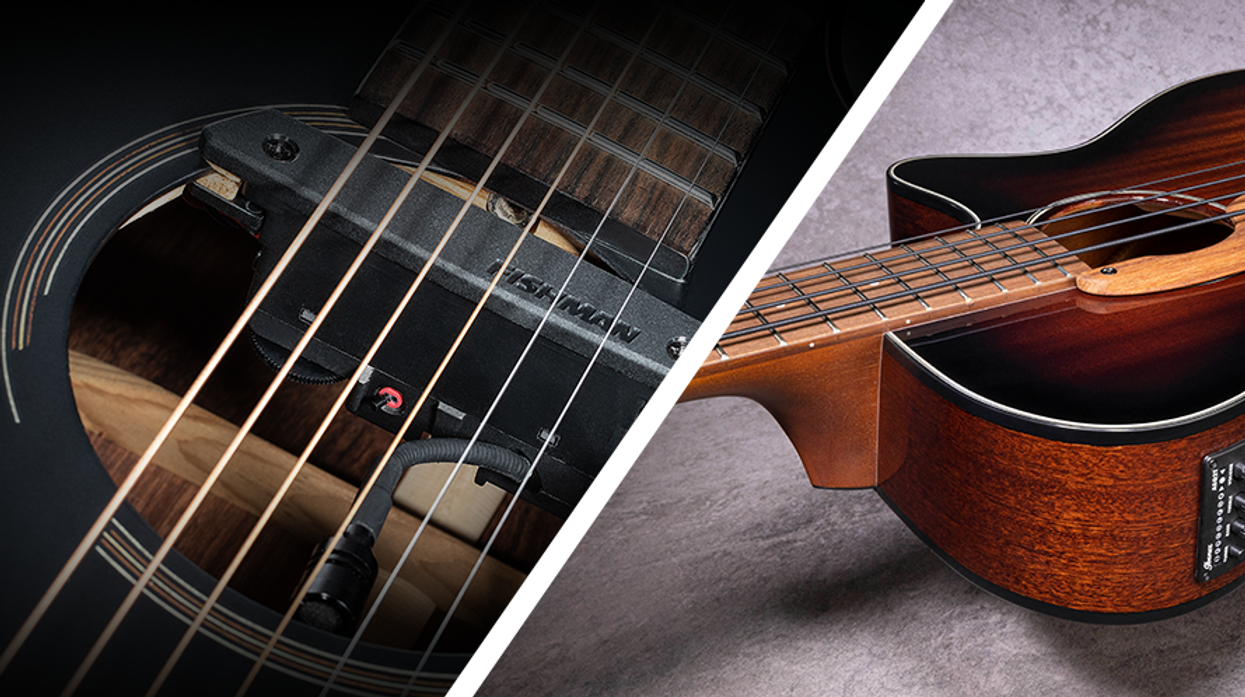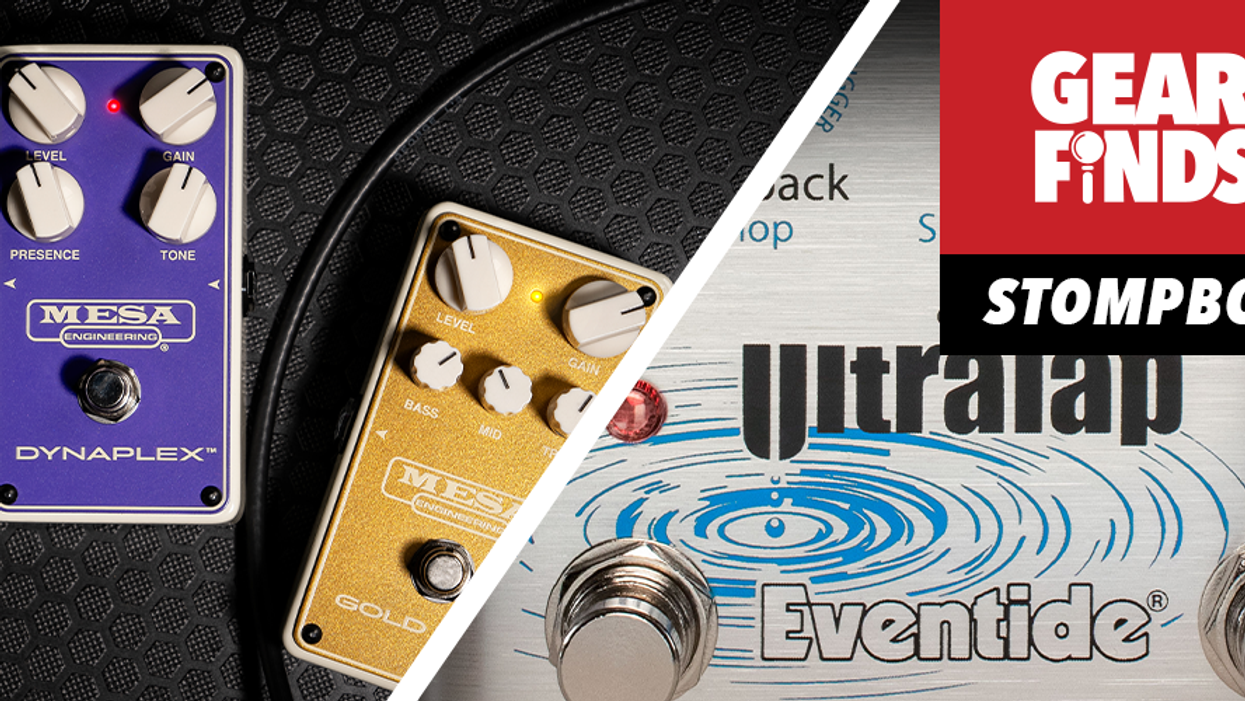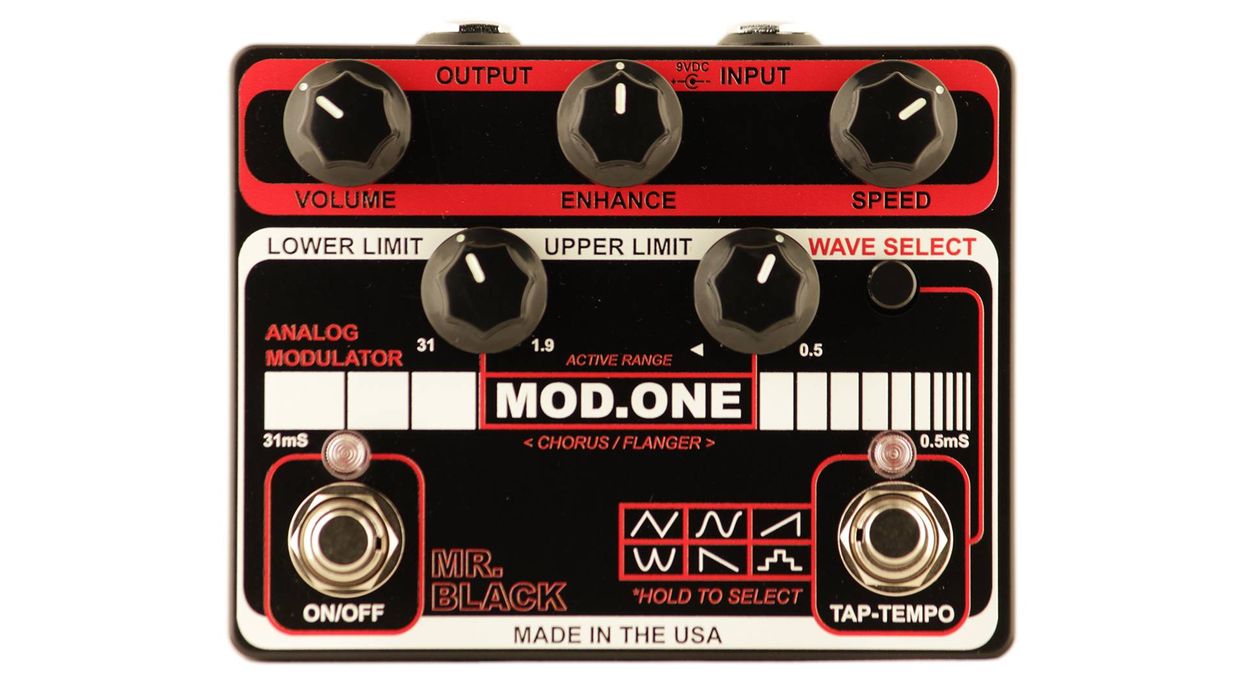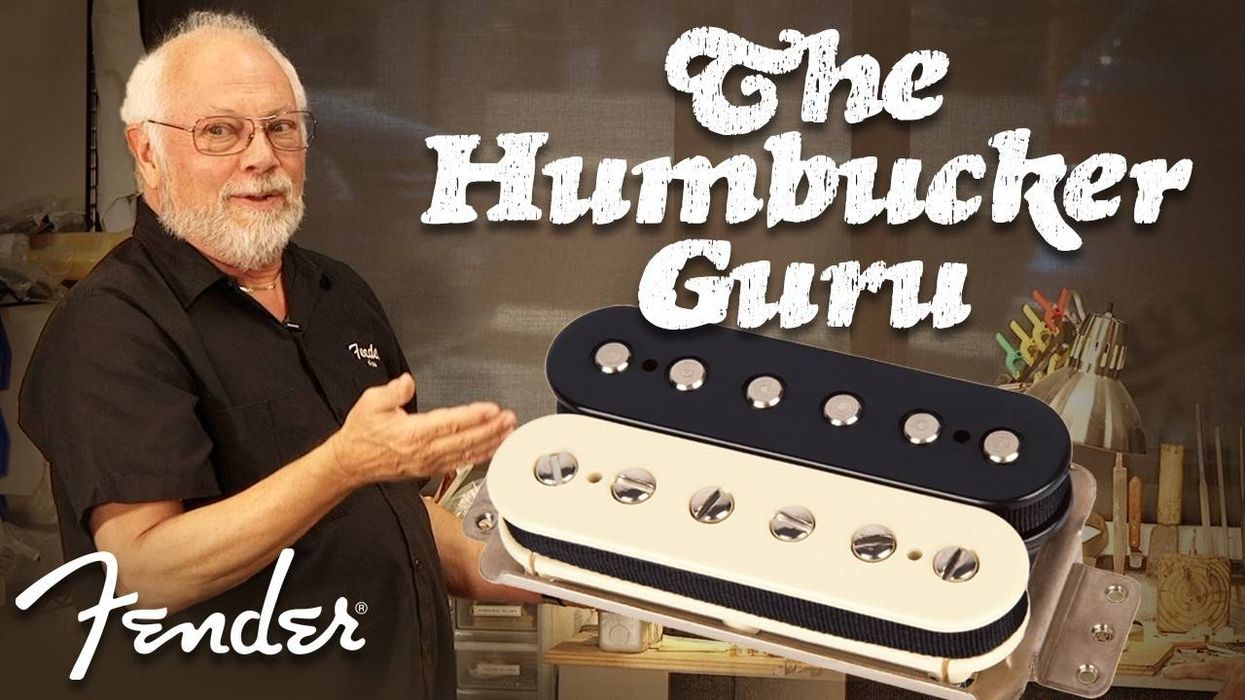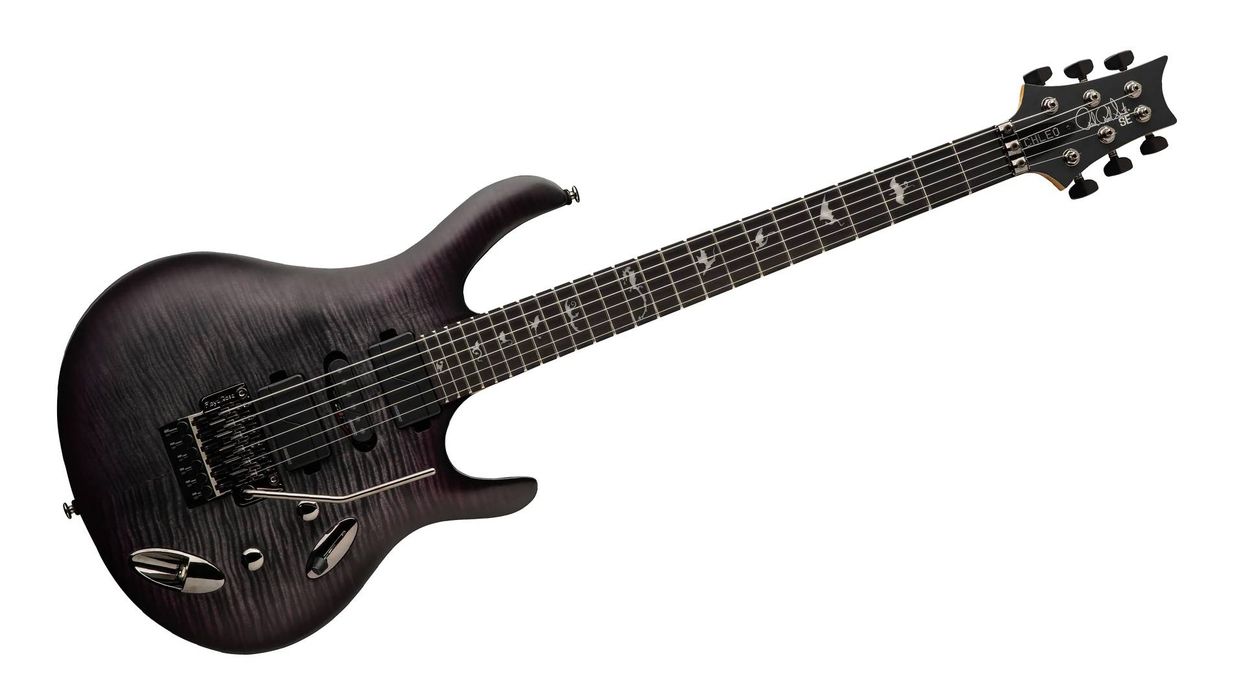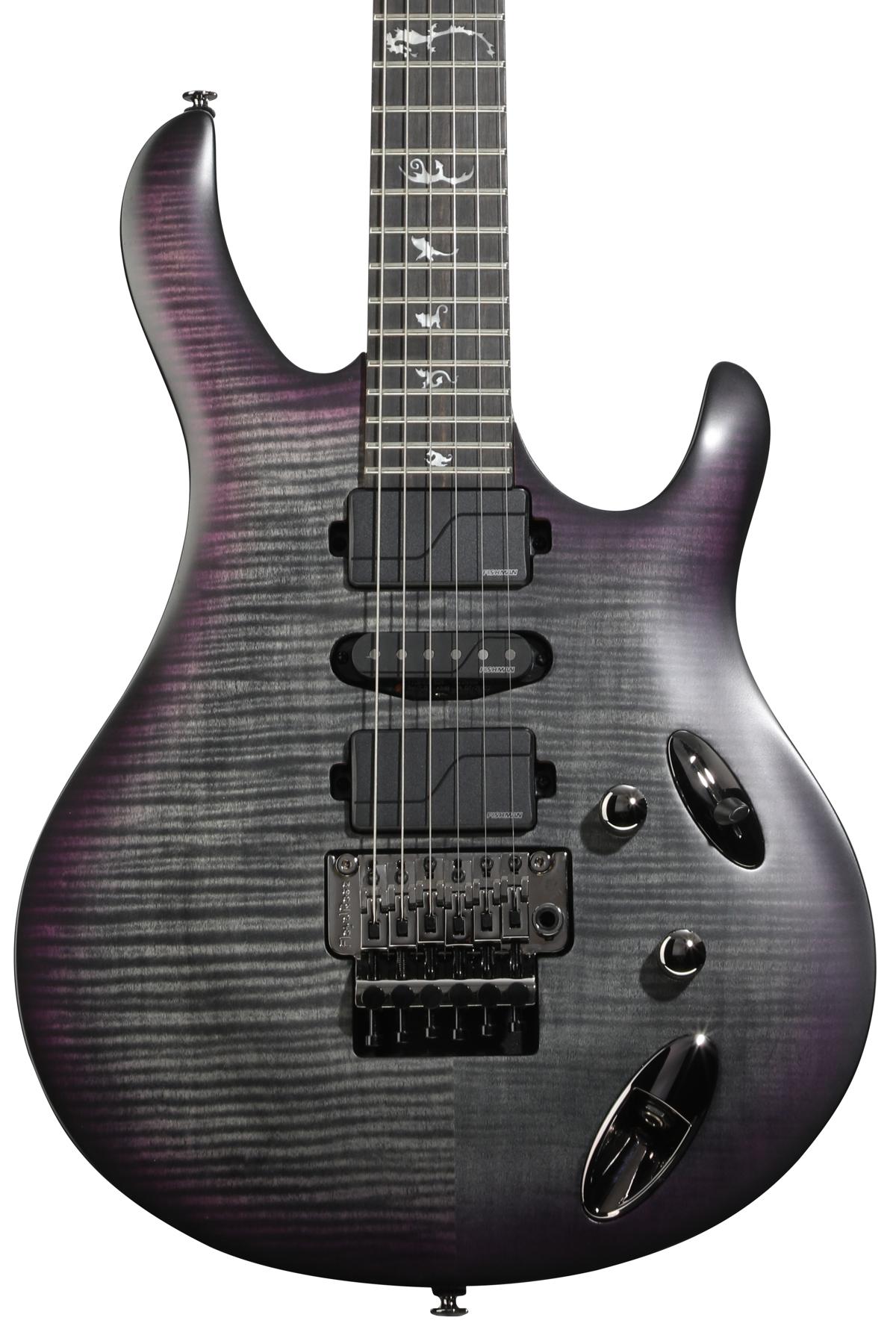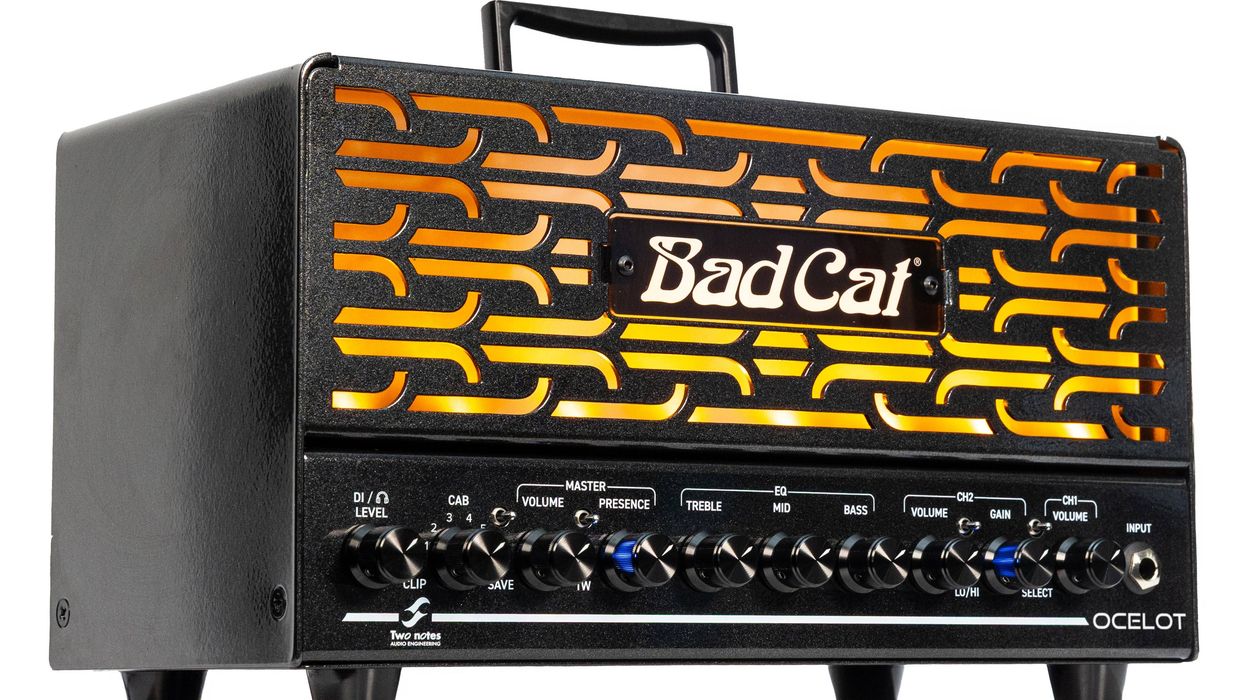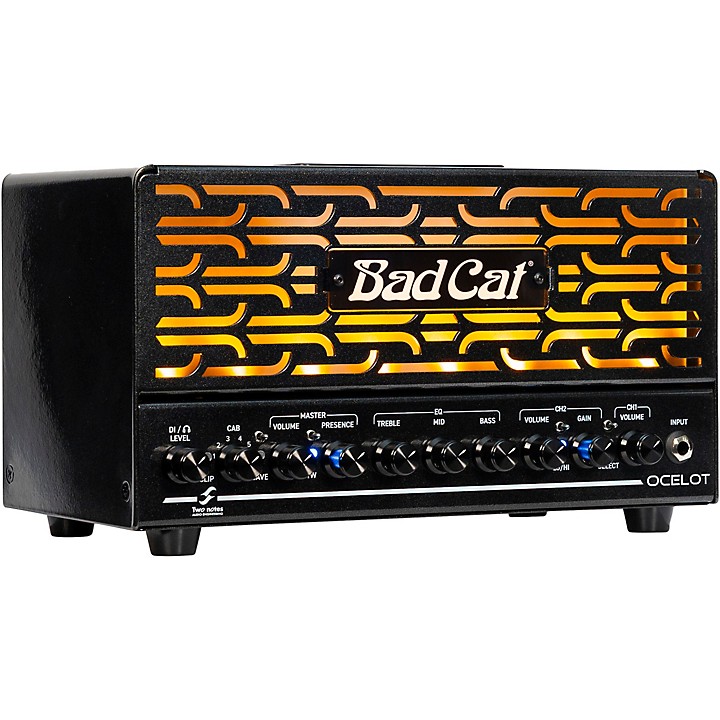Gretsch hollowbodies are icons. Though there’s no shortage of imitators, there’s just something about a Gretsch 6120 or White Falcon that’s untouchable—a feng shui balance of elegance and cool. Even so, for a long time the company missed out on business from a sizable niche of players who want semi-hollow sustain and resonance from a more compact body that’s easier to control at high volume.
Over the last couple of years, Gretsch unveiled a number of large-bodied “center-block” semi-hollow models that aim to combine the best of its hollowbody heritage with features that will appeal to fans of the ES-335 and its ilk. The latest—the G5620T-CB Electromatic—pairs a resonant, 1 3/4"-deep maple-laminate body with a pickup complement designed to deliver high-gain-friendly tones as the spruce centerblock reduces unwanted feedback at high dBs.
Deep-Dive Beauty
The 24.6"-scale 5620 is a shining example of how Gretsch’s Electromatic line has evolved over the last few years. What once seemed a dipping of the toes into entry-level waters has, in many ways, become a deep dive revealing impressive quality and beauty. Our review guitar came in a rich “rosa red” gloss-urethane finish through which you can subtly detect grains of the underlying maple spreading across the sumptuous arches and curves. The rosewood-topped maple neck features a 12.5"-radius fretboard inlaid with 22 remarkably clean, neatly dressed medium-jumbo frets. And peaking inside the cat’s-eye soundholes reveals straight, cleanly cut kerfing and no stray glue.
Ratings
Pros:
Excellent construction and attention to detail. Beautiful neck-pickup and in-between tones.
Cons:
Bridge pickup sounds harsh with moderately aggressive attack. Tuning issues.
Tones:
Ease of Use:
Build/Design:
Value:
Street:
$849
Gretsch G5620T-CB Electromatic
gretschguitars.com
Though the 5620 swaps the metallic pickguards and flashy headstock overlays of higher-end Gretsches with plainer black versions, it retains many of the brand’s trademark appointments: Full body and neck binding, knurled metal knobs with the vintage “G” logo, molded pickup surrounds, “thumbnail” fret inlays, and ingeniously practical strap retainers. Rounding out the hardware are smooth-turning Grover tuners, a licensed Bigsby B70 vibrato, and a pinned Adjusto-Matic bridge.
It’s Electro!
At the heart of the G5620’s electronics are two pickups that are less traditional than they look. To some, the bridge humbucker’s Black Top Filter’Tron name might recall both Gretsch’s venerated vintage Filter’Tron and parent-company Fender’s recent Blacktop guitar series. The similar names are coincidental, but if you drew that parallel you’re not far off: Both are optimized for high gain. The Super HiLo’Tron neck pickup looks very much like the vintage single-coil it derives its name from, though it’s actually a hum-cancelling dual-coil unit as well.
It’s all controlled via s 3-way selector and Gretsch’s tried-and-true five-knob scheme—a brilliant array with a volume and tone knob for each pickup, as well as a master volume on the treble bout that lets you dial in nuanced dual-pickup blends but still have the ability to shut everything off with a single knob swipe.
Rev It Up
When I strapped on the 5620, it didn’t take long to appreciate how well though-out everything felt: It was comfortable and balanced across my shoulder, the medium D-profile neck was a breeze to play, and the frets felt great. When I plugged the 5620 into a Goodsell Valpreaux 21 (for more American tones) and a Jaguar HC50 (for British flavors), I was a bit perplexed, though. Despite the hubbub about the pickups and the centerblock making the guitar better suited to high gain, I found the bridge pickup harsh in hard rocking modes. The problem wasn’t feedback or volume: I had the amps loud enough to get the controllable sustain that thinline guitars are famous for, but it was definitely brash. Soft playing with a pick or fingers yielded usable tones, but attacking the strings with even moderate amp gain made it sound a bit strident. Many players will want to avoid pairing this guitar with trebly amplifiers or roll high end back entirely.
The output was easier to manage when I brought the neck pickup into the equation. I haven’t had extensive experience with original HiLo’Trons from the ’60s, but the 5620’s Super HiLo’Tron has a clear, clean, single-coil-like responsiveness that is quite beautiful—so much so that it largely remedies the Black Top’s treblier characteristics when the two are paired. With the pickup selector straight up and the volume and tone knobs at various settings, the 5620 yields everything from sprightly chords perfect for jangle-pop to spunky compressed tones great for Travis-picked alt-country, or sweet tones that blossom into dreamy soundscapes with a little echo. And when you explore similar knob settings with the soloed Super HiLo’Tron, you get everything from warm, jazz-approved fatness to lush, bell-like tones that morph from gristly corpulence to gloriously singing feedback when you kick on the dirt. I can only imagine the magic that would ensue if the 5620 had a matched set of Super HiLo’Trons.
The Verdict
Gretsch’s beautiful G5620T-CB has so much going for it. For the price, it packs a serious punch in almost every category, from visual vibe to practical appointments, control flexibility, and ergonomics. Our test guitar had more tuning issues than other Bigsby-equipped guitars I’ve played—even when I wasn’t using the vibrato—but a roller bridge would likely alleviate the issue. And despite the harsh bridge pickup, you’d be hard-pressed to find another centerblock-equipped thinline that plays as nicely and has as much style and versatility.




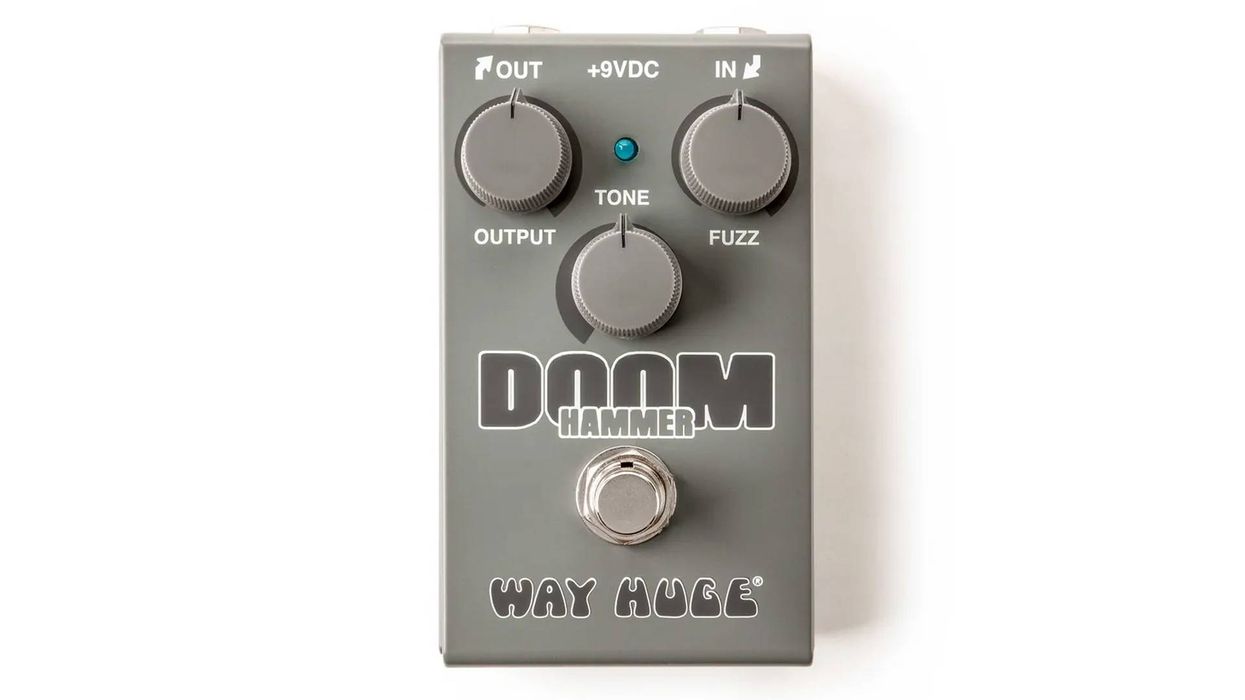
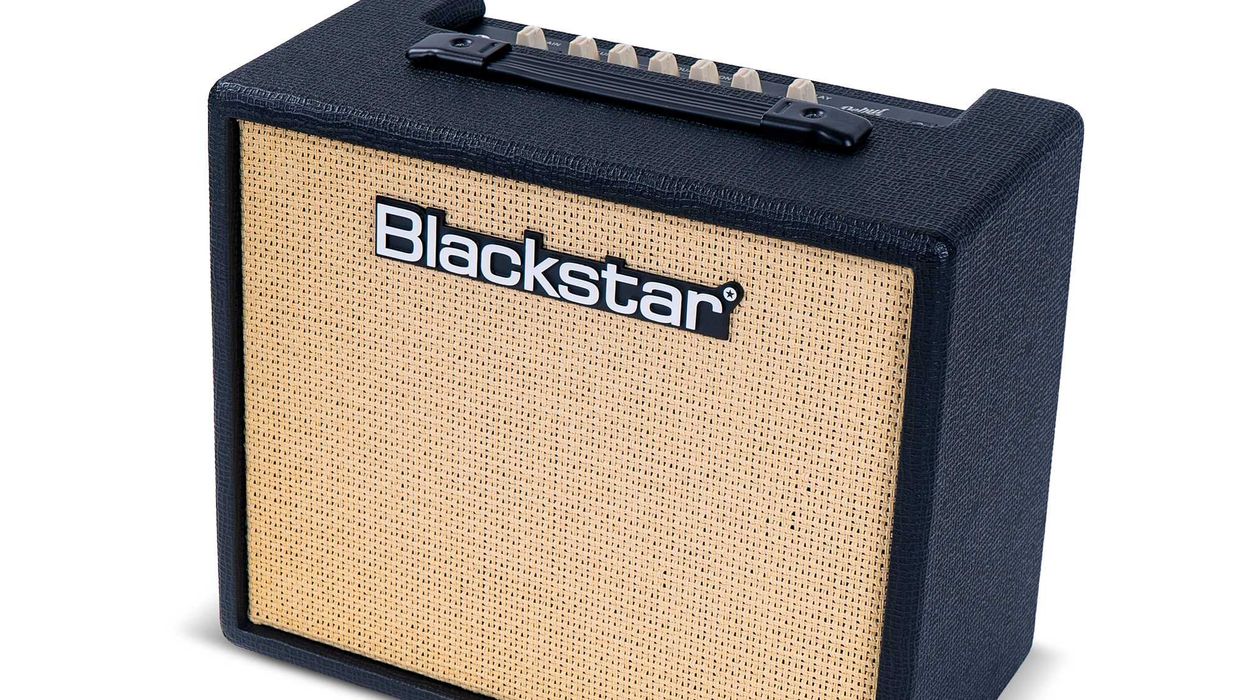
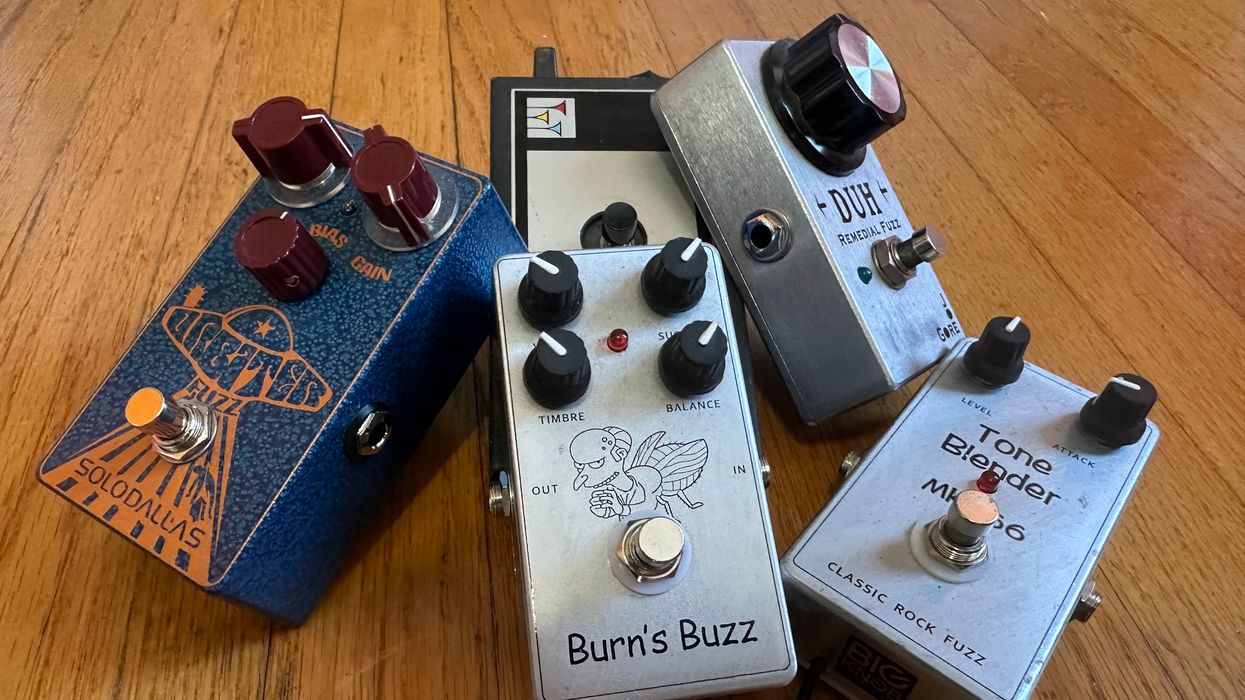

![Rig Rundown: Russian Circles’ Mike Sullivan [2025]](https://www.premierguitar.com/media-library/youtube.jpg?id=62303631&width=1245&height=700&quality=70&coordinates=0%2C0%2C0%2C0)
